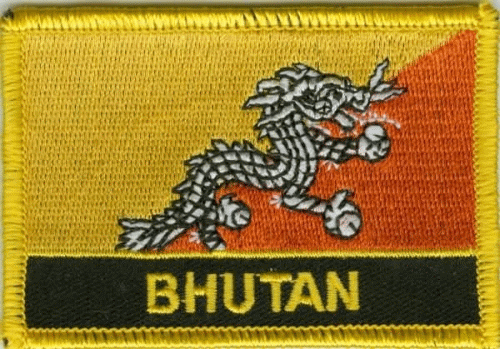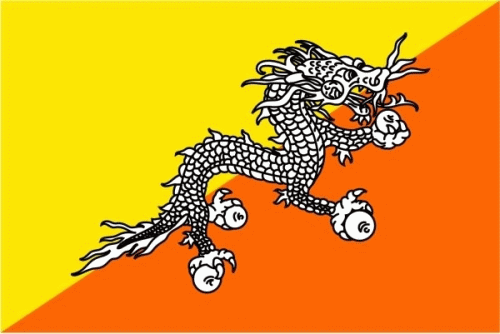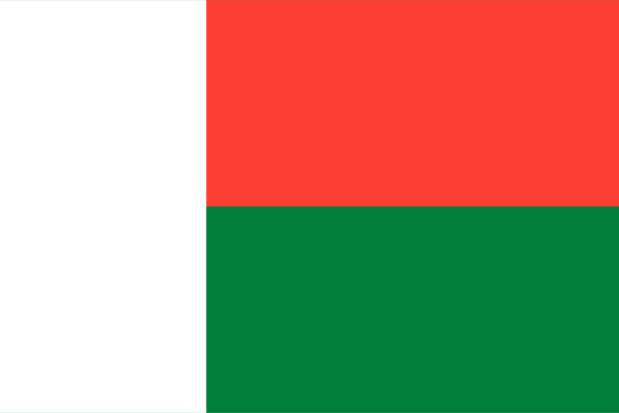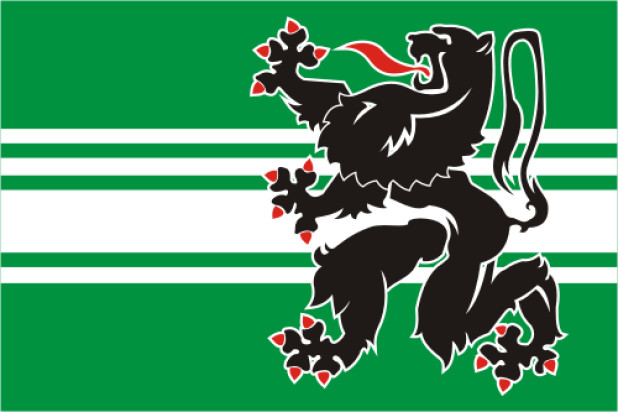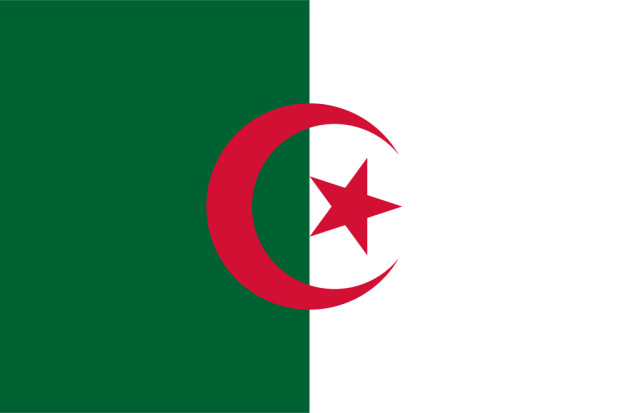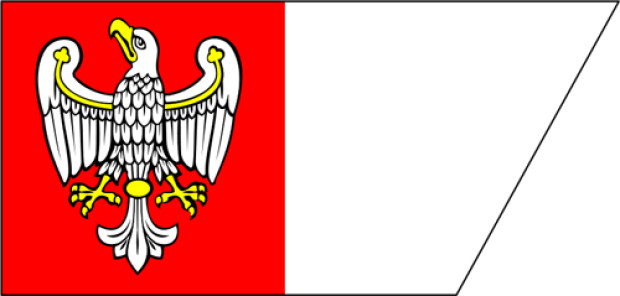Flag of Bhutan
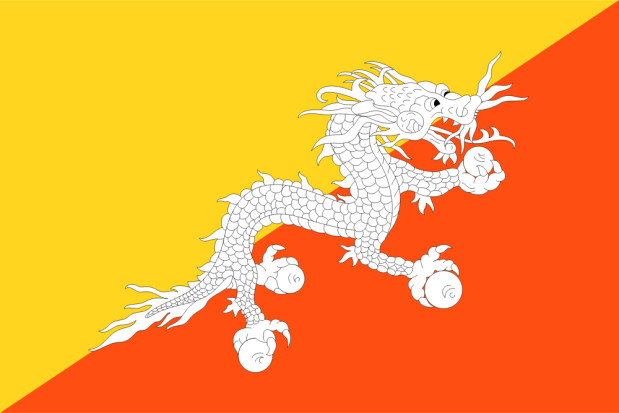
Listen to anthem
Top sellers from our flag shop
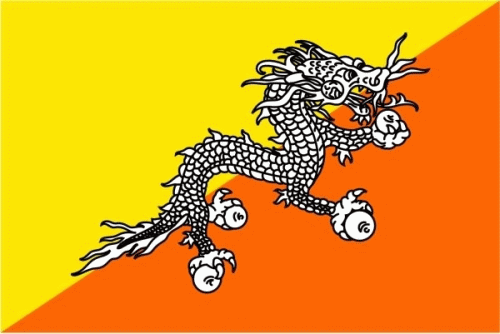
Bhutan Flagge 60x90 cm
8,90 €
Show in shop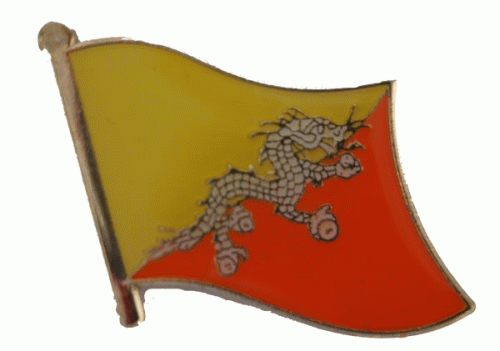
Bhutan Pin
2,50 €
Show in shopBackground knowledge
The flag is known since the 19th century. It is divided diagonally, and shows in the center ? above all ? a white dragon. The Tibetan word for Bhutan is "Druk Yul", which means "Dragon Kingdom". The flag originally displayed the colors orange-red and red-brown.Around 1962, changes were made to the flag. The dragon lying above the diagonal division looks away from the flagpole, and the reddish brown in the flag was replaced with saffron yellow.The dragon holds an orb in each of its fangs, and represents the universe. That ball, which the dragon holds a little upwards, is said to be the globe, and on some depictions flames even burst out of it. Saffron yellow represents, as it does in the whole of the Far East, the temporal power of the king, and orange-red the spiritual power of Buddhism. The white color embodies cleanliness and honesty. The flag is also often displayed in 2:3 format.The national emblem of Bhutan was redesigned in 1980. It appears exclusively in the colors black and white. It shows the "Khorlo", the Buddhist wheel of doctrine, or wheel of law, a symbol of the power of the monarchy. The wheel is protected by two dragons. They represent respectively the secular and spiritual authority. Below the wheel, between the dragons, is a lotus flower, a Buddhist emblem. Above the wheel is the gemstone "Umbrella". According to other sources, this image is a parasol, a Buddhist emblem of protection, but probably this interpretation is a somewhat unfortunate literal translation of the word "Umbrella". The four corners of the coat of arms stand for the provinces of Bhutan.
Diagonally divided; the upper triangle is saffron yellow, the lower orange. On the dividing line there is a dragon drawn in black and white, moving away from the flagpole.
Meaning
Saffron yellow symbolizes royalty. The dragon is deeply rooted in the mythology of the country of Bhutan, where thunder was considered the cry of the 'thunder dragons' (Druk). Its white color symbolizes its purity. The snarling head of the dragon symbolizes its strength. Its claws hold jewels, which symbolize wealth. This dragon protects the kingdom of Bhutan (which is called 'Druk' in Nepali). A monastery named Druk originated around 1200, and consequently the members of this religious group were called Drukpas. Orange is representative of the Drukpas monastery and the Buddhist faith. The diagonal equal division of the flag symbolizes the harmonious symbiosis between the royal house of the Wangchuks and religion.
Hymn
That's what ChatGPT knows about the flag of Bhutan
-
The national flag of Bhutan is a symbol of the country's national pride. It consists of a white dragon on a red-orange background. The dragon symbolizes the spirit of the kingdom and represents the dignity and courage of the Bhutanese people. The orange background symbolizes the Buddhist teachings and the serenity of the country.
-
The national flag of Bhutan was adopted by the 4th Druk Desi Tenzin Rabgye on December 17, 1774. It consists of a white dragon on an orange background symbolizing the Druk coat of arms. The white dragon represents the Drukpa Kagyu order, which plays an important role in Bhutan. The orange background symbolizes the serenity and dignity of the country.
-
The national flag of Bhutan is red with a white dragon placed at the top center of the flag. The dragon symbolizes the power of the kingdom. The upper part of the flag is white and the lower part is orange. On the white part is an orange circle representing the druk, the kingdom's coat of arms. The orange circle is flanked by two white scepters.
Discover something new
Random flags from our large flag database.
